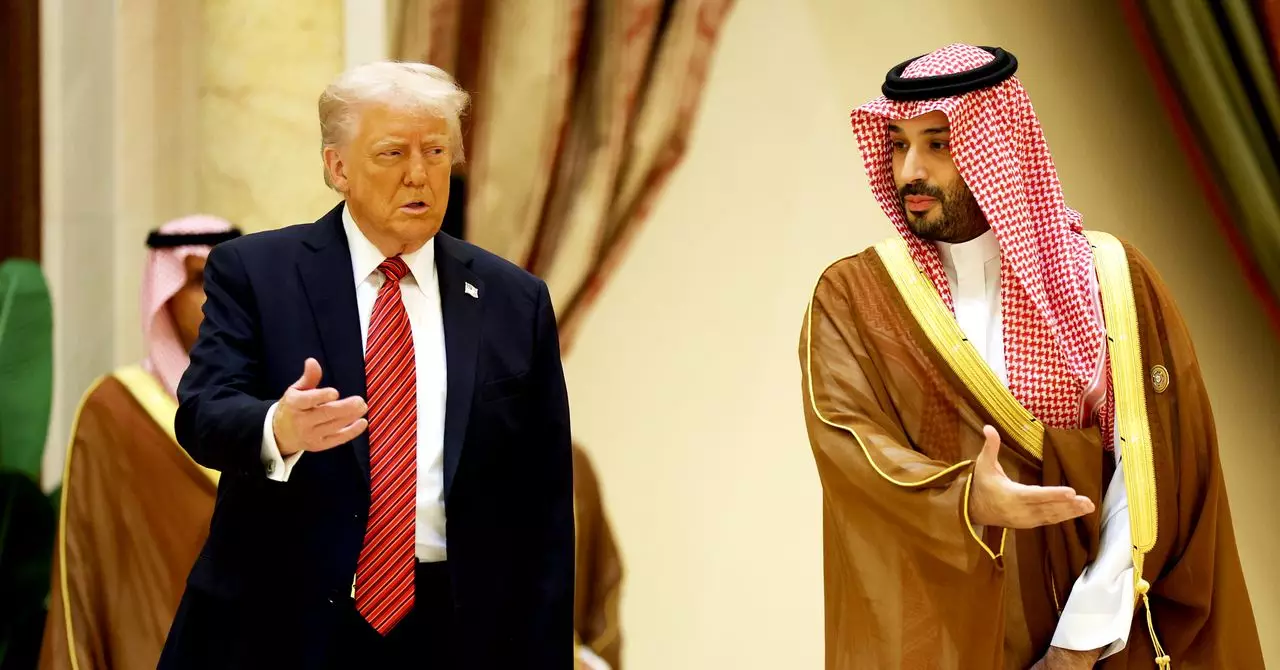As the world shifts gears toward a digital revolution, the relationship between the United States and several Middle Eastern nations has taken on unprecedented dimensions. President Donald Trump’s recent visit to the Middle East unveiled ambitious collaborations focused on artificial intelligence (AI) that could redefine the global tech landscape. This venture was not just a diplomatic exercise but a strategic maneuver involving vast sums of money and innovative technology, designed to cement a new technological equilibrium.
Trump’s tour took him to prominent hubs such as Saudi Arabia and the United Arab Emirates (UAE), where discussions culminated in the establishment of substantial partnerships aimed at revolutionizing AI infrastructure. The final stop in Abu Dhabi saw an announcement that marked a significant milestone; U.S. companies would join forces with Emirati firm G42 to develop the most extensive AI data center cluster outside of the United States.
AI as a Catalyst for Economic Evolution
The ambitions expressed during Trump’s visit count on one striking element: both the robust financial backing from oil fortunes and the intense desire to transition these economies toward high-tech industries. Sheikh Tahnoon bin Zayed Al Nahyan, leading the UAE’s Artificial Intelligence and Advanced Technology Council, heralded this collaboration as a way to propel the nation to the forefront of technological innovation. This partnership aims to create five gigawatts of AI computing capacity, which is not merely an increase in raw power but a statement of intent that the UAE seeks to transform into a global tech hub.
Simultaneously, Saudi Arabia announced the establishment of Humain, an AI investment firm under the umbrella of the Public Investment Fund, opening the gates for an influx of collaborations with leading American tech companies like Nvidia, AMD, and Amazon Web Services (AWS). These partnerships are set to be game-changers, with investment deals amounting to hundreds of billions of dollars that will fundamentally reshape the technological infrastructure of these nations.
The Global AI Race: Emerging Players and New Dynamics
The geopolitical dimensions of this technological outreach cannot be overlooked. The race for AI supremacy could redefine international relations, especially in the context of the growing rivalry between the U.S. and China. The U.S. tech giants will influence the trajectory of AI development in Saudi Arabia and the UAE, potentially allowing these nations to establish themselves as leaders in AI research and production.
Contemporary estimates indicate that Saudi Arabia’s partnership with Nvidia could eventually yield upward of 500 megawatts of capacity, primarily composed of highly sophisticated GPUs dedicated to AI training. This collaboration aims to transform the Saudi landscape, allowing them to develop frontier AI models that can compete on the global stage, thus paving the way for sustainable development and economic diversification that extends beyond oil.
The cash-rich nations of the Gulf possess both the monetary resources and the will to embrace technological transformation. However, the preference for American expertise comes with intricate dynamics, given their existing technological collaborations with China. This duality raises questions about how these nations will navigate their relationships with both superpowers while developing their own AI infrastructure.
Regulatory Landscapes and Strategic Maneuvers
A twist in this tale occurred just before Trump’s visit when his administration rescinded a prior ruling from the Biden era that aimed to restrict the sale of advanced semiconductor technology to certain countries, including Saudi Arabia and the UAE. Critics had argued that such restrictions could drive these nations toward partnerships with Chinese technological firms. By rolling back these regulations, the Trump administration not only aimed to maintain American technological supremacy but also to assure these nations of their significance in the U.S. technological ecosystem.
The implications are manifold. The decision symbolizes a deliberate shift in the U.S. strategy towards the Middle East, transitioning from a mere ally in the oil sector to a critical partner in the burgeoning tech landscape. This strategic reorientation is evident in the commitment of AWS and Humain to jointly invest $5 billion in infrastructure in Saudi Arabia.
The merger of vast financial resources and cutting-edge technology highlights an era where the Middle East could emerge as a frontrunner in global AI innovation. With both opportunities and risks looming large, these collaborations represent the complexities of aligning interests across geopolitical landscapes.
Investments in AI by Gulf nations offer not only a pathway to economic diversification but also a chance to engage in the critical debates surrounding ethics, governance, and the future of technology. As new research centers and infrastructure rise from the desert sands, the question remains—will they stand as a beacon of progress or become embroiled in the delicate chess game of international relations?

